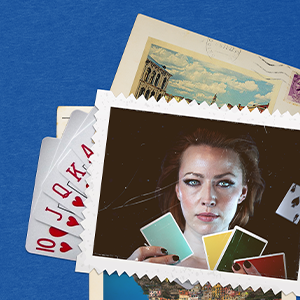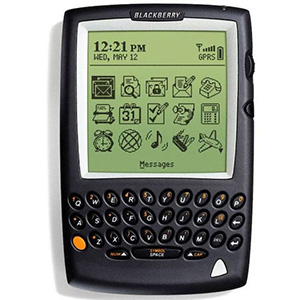TRIM; One Take Wonders
By Leonie Helm
Films shot in a continuous take, work of artistic genius, or pretentious and unnecessary?
One-take films and the use of long shots have been a directorial technique for decades. Although Birdman was not all shot in one take, just made to look like it was, director of photography Emmanuel Lubezki has shed some light on this intriguing cinematic technique. “Life is continuing and maybe not having cuts was going to help immerse the audience in that kind of emotional rhythm”. Lubezki remembers director Alejandro Gonzalez Iñárritu telling him; “When I wake up in the morning and I start my day, it doesn’t feel like a bunch of cuts. It feels like a constant move”.
He has a point, there’s no post production in real life and the one-shot film, despite unrealistic subject matter, can feel more real than a documentary sometimes.
In a recent interview on the Graham Norton Show, actor and star of the Oscar nominated If Beale Street Could Talk Regina King, celebrated the director, Barry Jenkins, use of the long shot. “The way the camera moves, the way he just kind of sits there, brings the audience in. I have had people come to me and say I was just so uncomfortable I felt like I was invading on someone’s private space, but I couldn’t look away.”
Another Oscar nominee Roma by director Alfonso Cuarón employs the long shot technique to create drama, suspense and at times intense discomfort (people who have seen the film will know exactly the scene).
While these films have use long shots to create mood, some directors took this technique further and shot the entire film in one take. These three examples are particularly impressive.
Russian Ark, 2002
One of the most interesting on the list is the 2002 Cannes Palm D’Or nominee Russian Ark. Directed by Alexander Sokurov, the 96-minute continuous shot film follows an unnamed narrator through the halls and corridors of the Winter Palace in Saint Petersburg. He implies that he is a ghost, killed in a terrible accident and is now drifting through the palace encountering real and fictional people from various periods of the city’s 300-year history. The film uses the ‘fourth wall’ device, but repeatedly breaks and re-builds it, making the film a disjointed and confusing at times.
Our narrator is accompanied by ‘The European’, who represents the Marquis de Custine, a 19th century French aristocrat and travel writer, who documented his travels through the Russian Empire and the reign of Tsar Nicholas I in this work La Russie en 1839. At times the two men interact with characters they meet, other times they pass through historic scenes like ghosts.
The film had a cast of over 2,000, all of whom had to be ready at the word ‘action’ and not a single mistake was allowed, as well as 3 orchestras and an entire host of props. To add to an already stressful shoot, the cast and crew were only allowed 36 hours in the National Hermitage Museum to film, meaning they had to set up, get the perfect take and deconstruct their set all in a matter of hours.
One scene which strikes the audience as a particularly impressive feat is the ballroom scene. The filming was such a struggle that just before entering the ballroom to shoot the 18-minute sequence, the camera man, Tilman Büttner, turned to his assistant and told him he was too exhausted to continue. Complaining of pains in his legs and groin he nearly gave up, until he saw the 600 dancers, all in costume and was inspired to continue.
A truly amazing film, the effect of the single take is to fully immerse the watcher in the film, to add to the confusing time travelling surrealism and to test the boundaries of film making.
Victoria, 2015
Released in 2015, Victoria draws many stylistic comparisons to Russian Ark due to its commitment to the single shot format. At 140 minutes, the pressure not to mess up is enough to add to the audiences’ feeling of uneasiness. Amazingly, the films budget only permitted three takes, thankfully the third one hit the mark. The script was limited with much of the dialogue improvised, and the film itself understandably doesn’t have the slickness of an edited film.
The continuous plot follows Victoria, beginning as she leaves a club in Berlin. She meets four young men, one of whom woos her in to a violent crime. The action in the film is explosive but not always slick. During a chase scene Laia Costa, who plays Victoria, forgot where she was supposed to drive and nearly crashed in to the films backstage production hub. With a limited budget and time scale, this stress is heavily transferred in to the drama of the finished film. The films faults remind you that what your watching is in real time, you’re not being fooled. That, not the single take, is the point says director Sebastian Schipper.
“The job of art is always to give us the white noise that your brain needs”, says Schipper. “The digital age lets us erase all of the mistakes. I think we’re only starting to find out how that is taking something substantial away from us. We’re so good at decoding voices and expression that we need to feel the stuff that is not optimised”.
Schipper takes considerate umbrage with the idea that the one-shot film is a ‘gimmick’. “How could something that crazy be a gimmick? Dear sirs and ladies: it’s not a gimmick. It’s insane to use that word for it”. He does however believe that making and edited film look like it’s been shot in one feels gimmicky, “The camera tells if you lie”.
The Wedding Party
Moving away from the hard-hitting art house films that tend to lean towards more unique production techniques, The Wedding Party is an American Rom-com that is all shot in one-take. The plot itself is lacking somewhat in originality; a wedding, tense comedic relationships, and thin characters make this film unoriginal however, seeing a typically Western rom-com model subverted by a typically art-house style, is intriguing.
Again, the aim in using the single shot technique was audience immersion. Director Thane Economou wanted the audience to feel as though they were at the party; “For me, it was about creating a fully immersive experience. I wanted it to feel more real and immersive, specifically because my film was a comedy, and you don’t tend to see this shooting style with a broad comedy.”
Despite the slightly weak nature of the plot, the one-shot technique does make the awkward humour more awkward, and the slow snaking of the camera from scene to scene does hold your attention.
“For me it ties in with the thematic of the film, which is all about accepting imperfection…So for me the technique is an essential part of the film”. The play out was heavily rehearsed for 3 weeks, then shot in 5 takes over 3 days.





